How To Sidechain In Pro Tools
Side-chain roughing is a technique used by the world’s top mixing engineers to achieve dynamic changes to a recordingIn the previous tutorial ‘Compression and EQ Techniques for Mixing Vocals’ I discussed some of the standard features of the compressor, a device used to reduce the difference between the louder and quieter parts of a signal (dynamic range), now were going to dig a little deeper and learn about a circuit found in compressors called the ‘side-chain’. However in order to unlock these techniques we’re going to have to understand the signal flow first. In the simplified diagram below we can see the basic signal flow through a compressor.Reading: how to sidechain in pro toolsA compressor is simply an amplifier that reduces the volume of anything that passes above a user defined level (known as the ‘threshold’). It is controlled by a signal passing through a part of the compressor called a ‘level sensing circuit’ (LSC), which tells the compressor how it should act. You could think of the LSC as the compressors brain!It is important to realize that the ‘level sensing circuit’ is placed on a parallel path (known as the ‘side-chain’) to the signal that is being compressed and the signal passing through the LSC never reaches the output of the compressor, it is simply just used to control the compressor’s amplifier.
Internal Side-Chain
Contents
The term ‘internal side-chain’ means that the input signal that is being compressed is also fed in parallel to the side-chain, to pass through the level sensing circuit and control the device. This is the default behavior of all ‘dynamic controllers’ such as compressors, limiters, gates and expanders. Many advanced dynamics devices also include an EQ in the side-chain path, this is used to filter the frequency content of the signal before feeding the LSC, which provides numerous production possibilities, as we will discover later.
External Side-Chain
Most dynamic controllers also offer the ability to use an external side-chain; in this situation an external signal, which can be totally different to the one that is actually being compressed, can replace the internal signal in the side-chain and pass through the level sensing circuit to control the compressor’s amplifier.This external input to the side-chain is known as the ‘key input’. When working in Pro Tools and using plug-ins (rather than hardware) this is done by selecting the bus (a virtual audio path) or track in the session that contains the signal you want to feed the side-chain’s input from the plug-ins key input menu options.In hardware gear this is done via an insert point known as a ‘send and return’ placed in the side-chain path which connects to output and input sockets on the rear of the unit.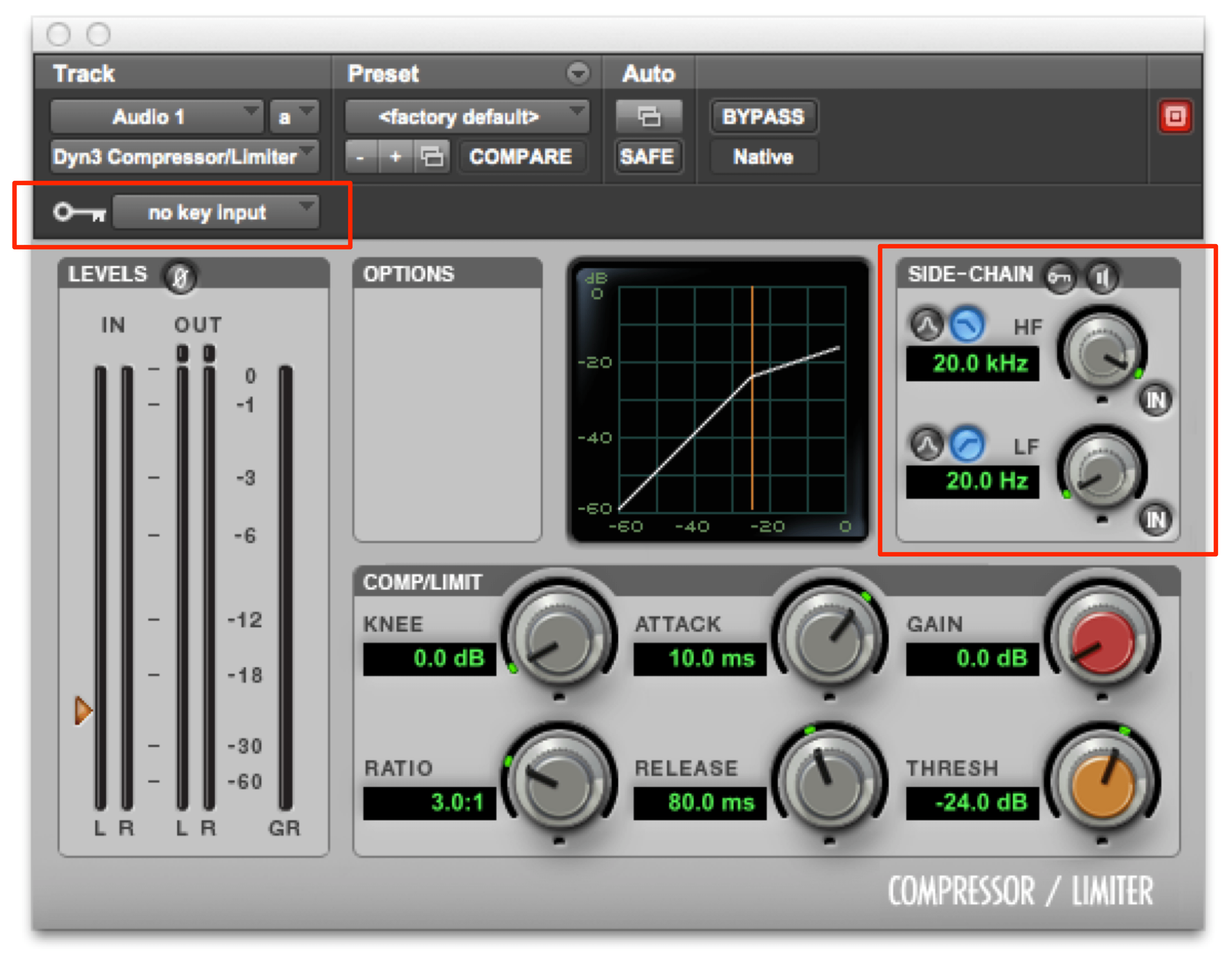
Internal Side-Chain Techniques
Read more: how to turn on mms on iphone 5sTo try some of these techniques, place the Dyn3 Compressor on the insert slot of the track or channel you wish to compress in either the Mix or Edit window.Frequency Conscious CompressionThe idea behind this is that by adjusting the frequencies present in the side-chain signal we can make the compressor ignore or react less to certain elements of the signal. To achieve this technique, we will be using the internal side-chain and the internal side-chain’s EQ (filter) section.In this example I will be applying ‘frequency conscious compression’ to an entire mix by placing the compressor on the master output fader in order to control the mix’s dynamics. This technique is useful when working with music that has strong elements such as the loud kick drums found in EDM style music. Normally when working with this type of music the prominent presence of the kick drum drives the compressor to the detriment of the other elements.
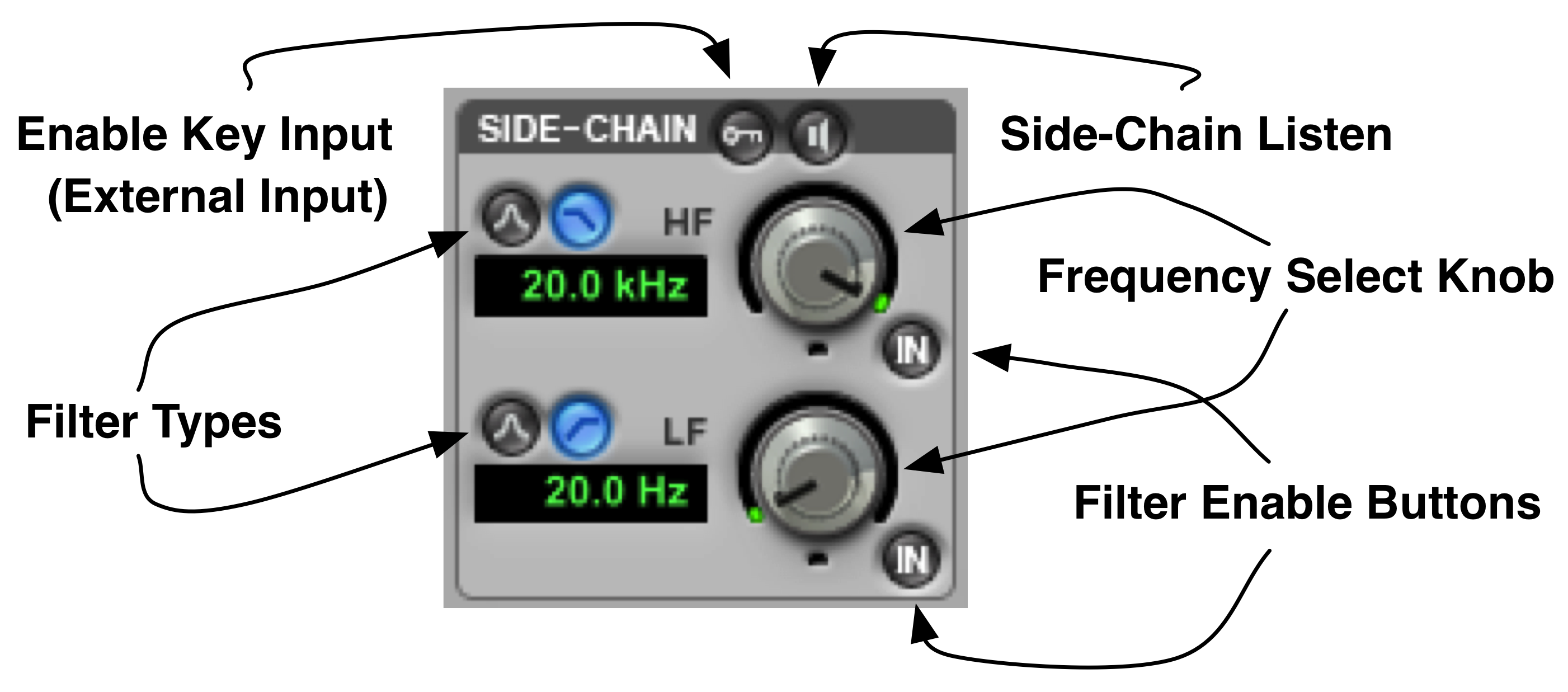
Although the Dyn3 Compressor offers high ratios of up to 100:1 it is not the ideal choice for ‘limiting’. A limiter is basically a compressor with a very high ratio of 100:1 or over. Limiting is a technique used by mastering engineers to raise the average volume of a final mix whilst restricting peaks in audio material from clipping and distorting (breaching 0dB on the master output meter). Limiters with side-chain circuits are not common but some compressors such as the ‘PSP Master Comp’ (shown below) offer enhanced features in comparison to the Dyn3, including a ratio of up to ∞:1 (infinity).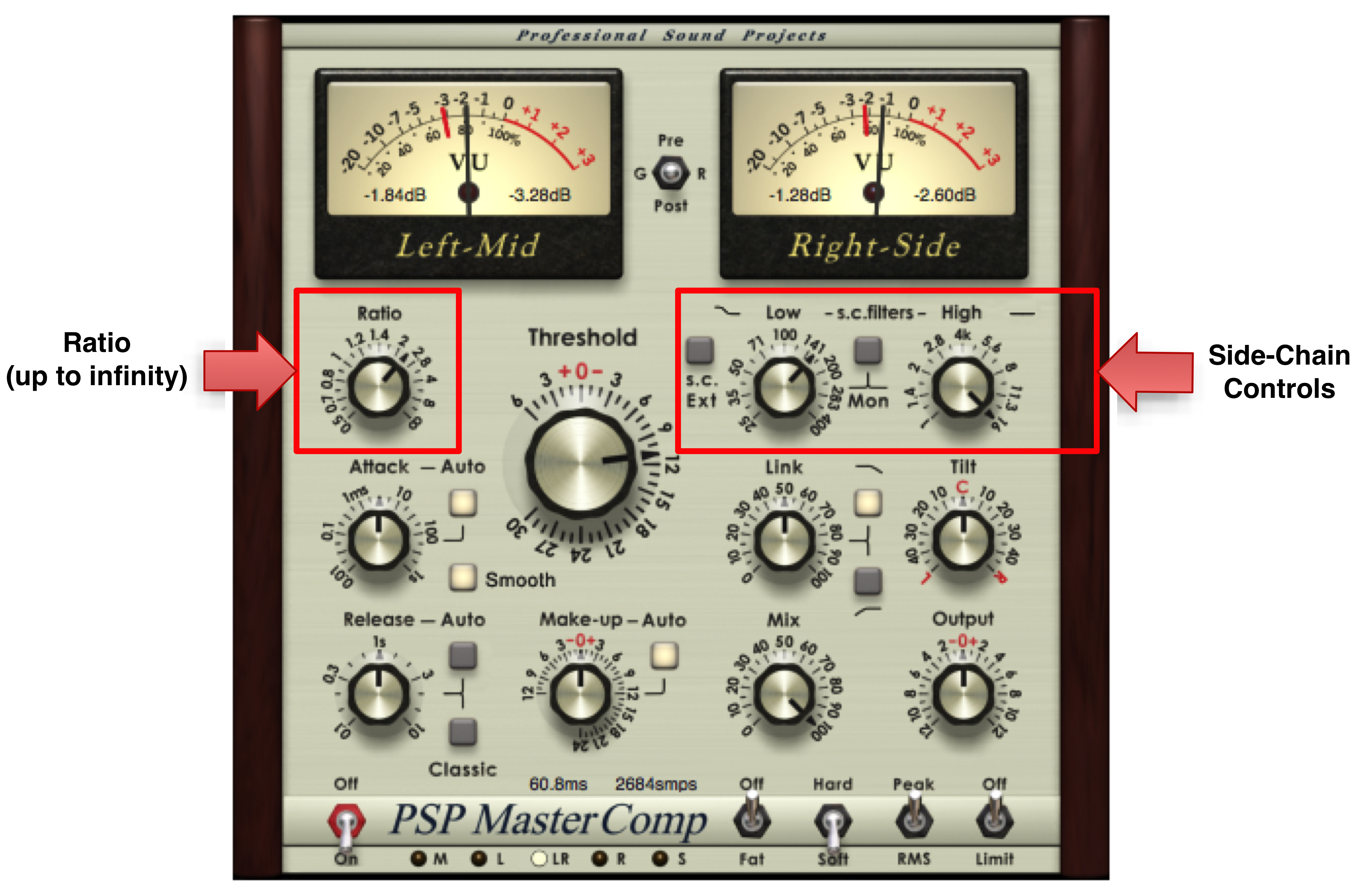
The Side-Chain De-Esser
As shown by the example above, it is possible to alter the side-chain circuit with EQ in order to have the compressor react to certain frequencies present in the signal. This same principle can be applied to removing sibilance (the excessive prominence of consonants, such as “s”, “z” and “sh”) from a vocal recording. In order to do this we must highlight the frequencies we wish to remove using the side-chain EQ in order that the compressor reacts more strongly to them. Sibilant frequencies are usually found at around 7kHz but vary from singer to singer.
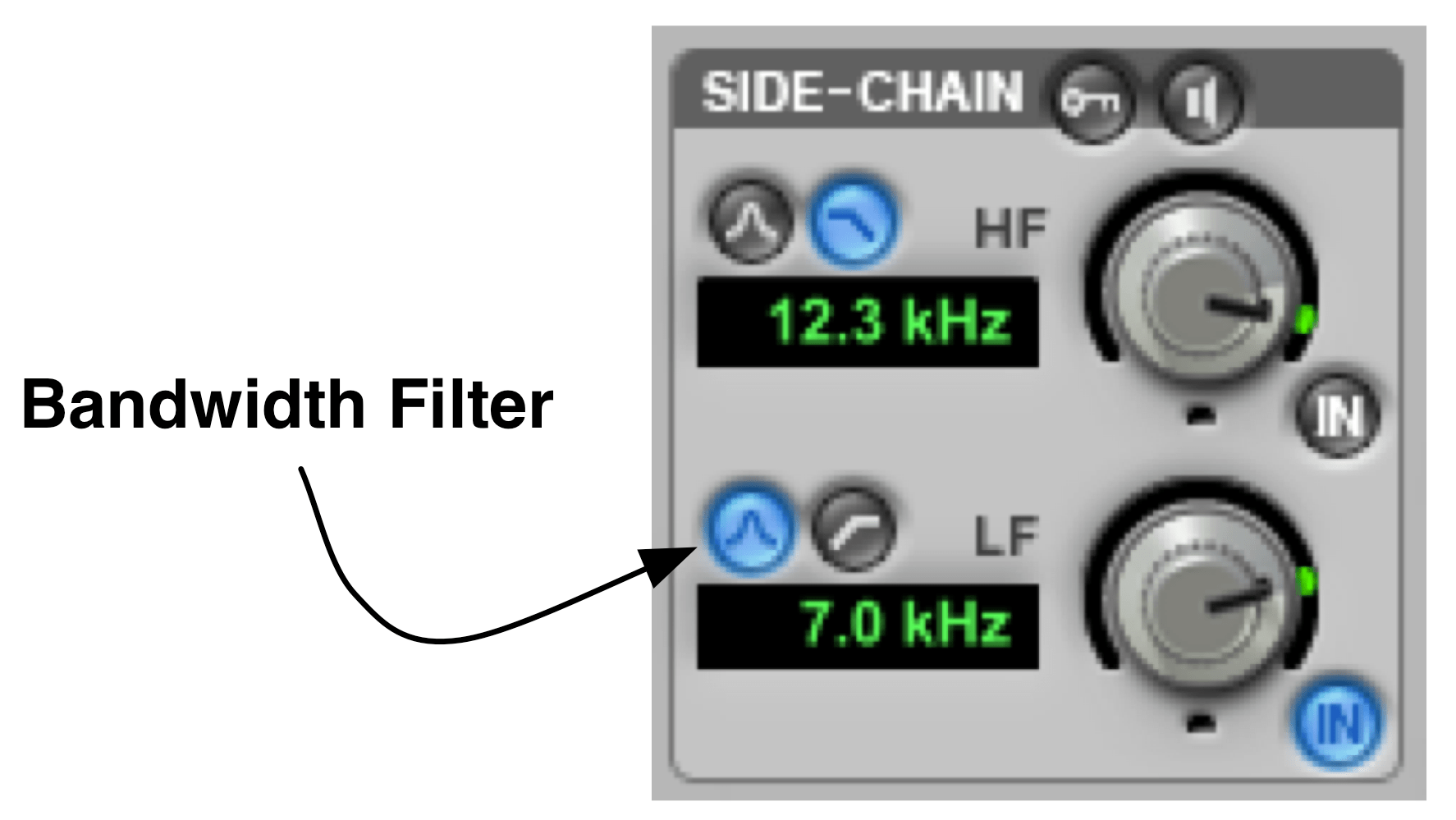
Tip: A similar technique could also be used to reduce the squeaks caused by finger movements against the strings in an acoustic guitar performance.The use of a side-chained compressor rather than a dedicated de-esser plug-in is favored by some of the world’s best mixing engineers such as Bob Clearmountain, although in Bob’s case he goes a little further by duplicating the vocal to another track, EQ’ing it using his SSL G+ Series channel EQ, removing the duplicate channel from the mix (so it cannot be heard) and then sending the duplicate on a bus to the side-chain input of the original vocal’s compressor. Basically the point of him doing this is to insert a more comprehensive EQ in the side-chain.
Solo Frequency Bandwidth
Tip: One of Pro Tools most useful and best kept secrets is the ‘solo frequency bandwidth’ shortcut, when used with the Pro Tools standard ‘7 Band EQ 3’ plug-in this is a great way to locate problematic frequencies such a sibilance.Hold Shift/Control and adjust the plug-ins frequency knobs (or Q/Gain if desired) to activate ‘solo frequency bandwidth’ mode.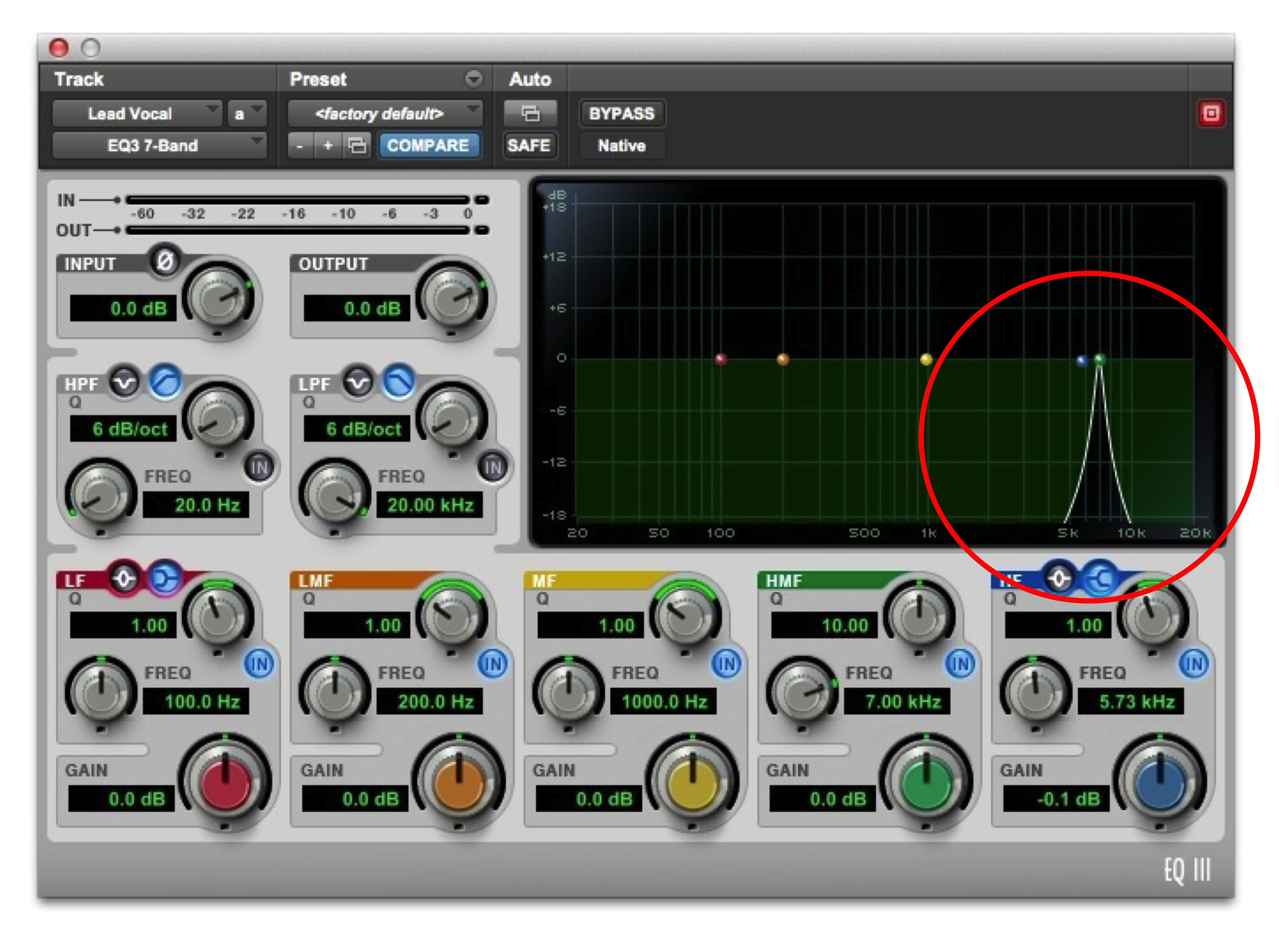
External Side-Chain Techniques
As demonstrated by the previous de-essing technique used by Bob Clearmountain, the ability to modify or replace the side-chain signal offers greater control, flexibility and creative possibilities. Lets take a look at the routing involved in order to set this up.Setting Up the External Routing
 In the example above I will use the MIDI kick drum’s amplitude character to apply compression to the Electric Piano via the external side-chain (a pumping type effect popular in EDM and Pop music).
In the example above I will use the MIDI kick drum’s amplitude character to apply compression to the Electric Piano via the external side-chain (a pumping type effect popular in EDM and Pop music).
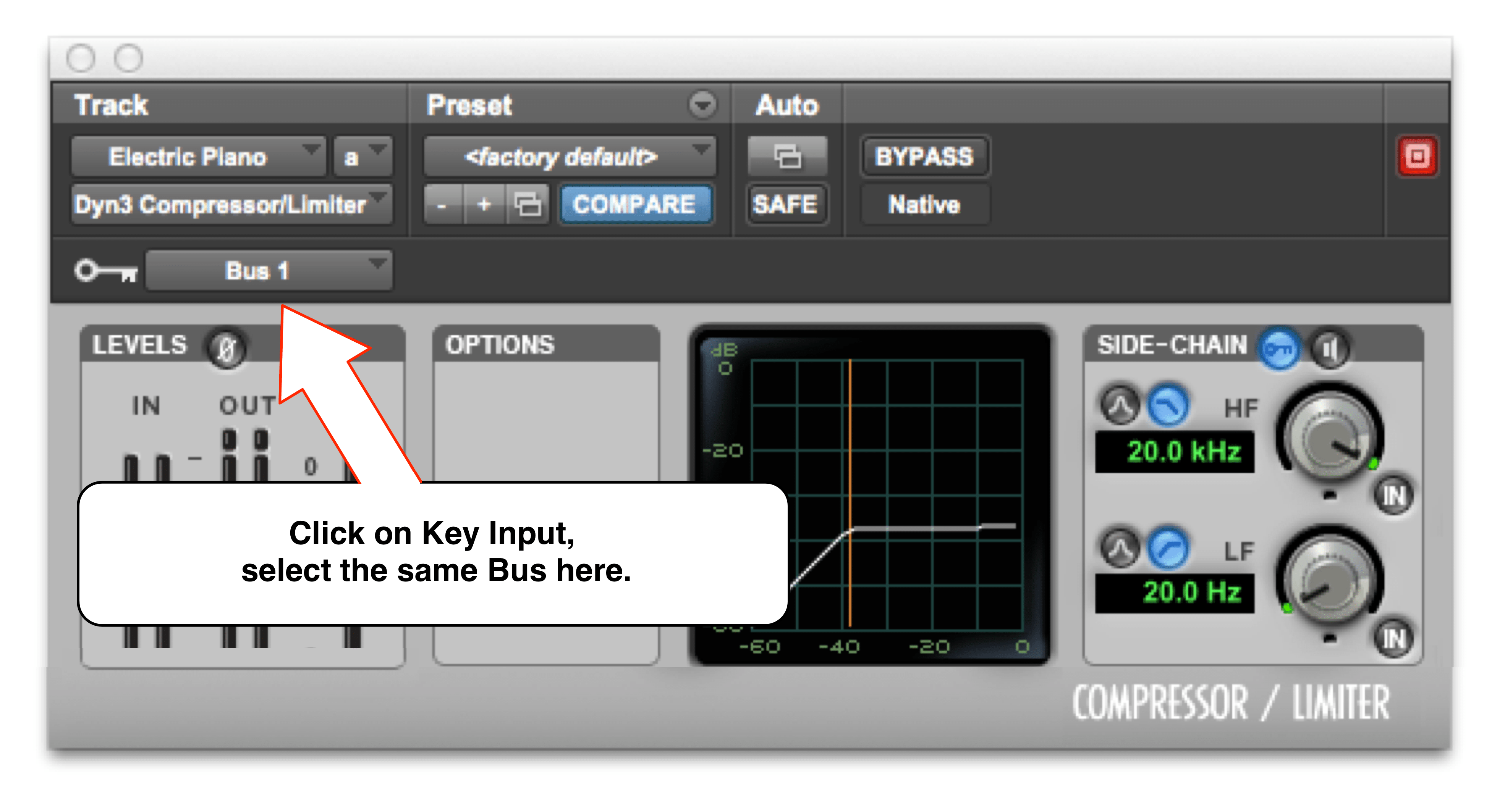

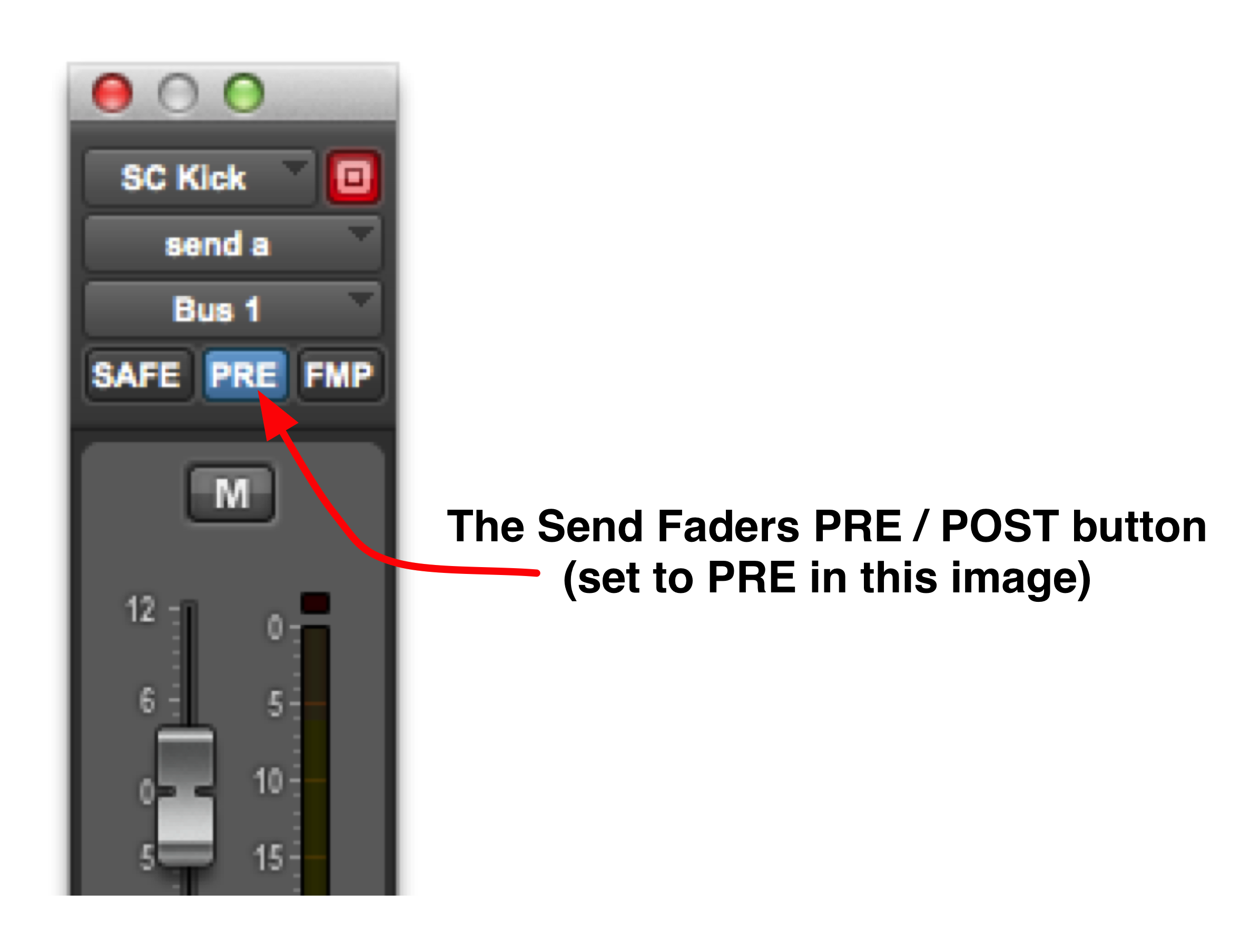
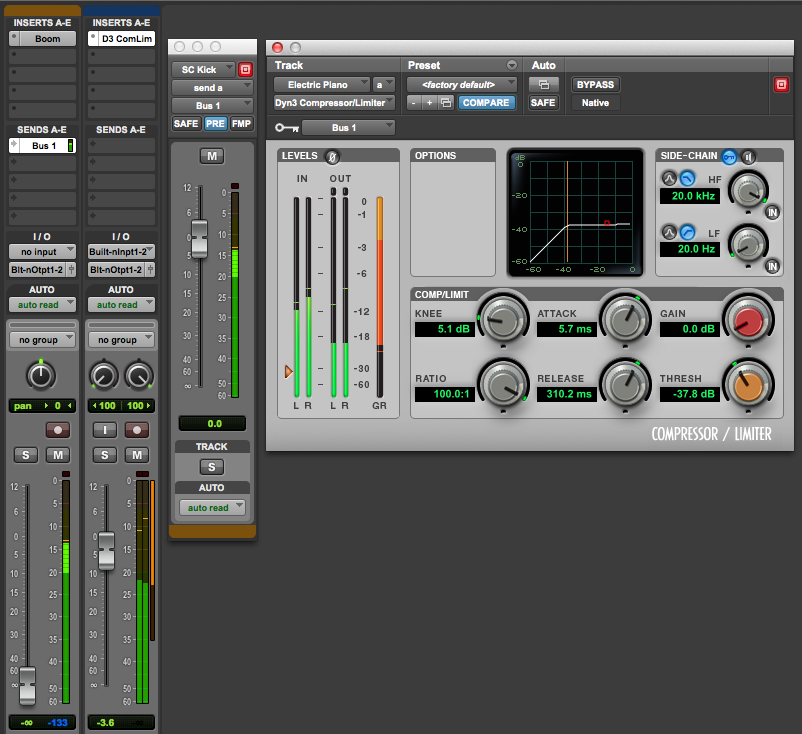
Other Applications
The technique explained above is perhaps the most common use of side-chaining currently (to the point of becoming a cliché), but once you understand the process, with a little imagination you can use the same theory applied in multiple ways to aid your productions. Consider these examples:Classic DuckingCommonly used at radio stations and when creating pod casts. In this example the announcers voice is the key input signal that compresses the background music, when the announcer talks the music is compressed and turned down, allowing him to be heard clearly.Masking AvoidanceSame thing, different application, the common use of this is to make room for elements of a mix that play together and occupy the same frequency range, for instance the bass drum and bass guitar. In this example the kick drum is the key input signal that compresses the bass guitar, when the kick is present the bass guitar is compressed and turned down, allowing the kick to be heard clearly. If the release time on the compressor is fairly quick the ear doesn’t notice the volume drop and is distracted by the kick. This technique can really help to tighten up the low end of a song, allowing the overall bass level to be more consistent.Ducking within a MixReducing the amplitude level of one sound when another (that is side-chained to it) enters the mix can be extremely useful to create space. Some further application include the following:Ducking the drum overheads with signal sent from the kick and snare drum, this reduces the level of the kick and snare on the overhead channel and creates a hole that allows the direct microphones on the kick and snare to be more prominent in the mix.Using the Vocal track to duck the vocal effect return (normally reverb or delay), this prevents the effects from overwhelming the vocal, yet the effect tails are still prominent the moment the vocal is absent.Ducking rock guitars gently when the vocal enters the song to allow the lyrics to be heard more clearly. You can also use a technique called ‘selective frequency bandwidth ducking’ to take this concept a stage further (to be discussed in another tutorial).Read more: How to make a plastic pry tool
Last, Wallx.net sent you details about the topic “How To Sidechain In Pro Tools❤️️”.Hope with useful information that the article “How To Sidechain In Pro Tools” It will help readers to be more interested in “How To Sidechain In Pro Tools [ ❤️️❤️️ ]”.
Posts “How To Sidechain In Pro Tools” posted by on 2021-11-05 03:17:22. Thank you for reading the article at wallx.net





